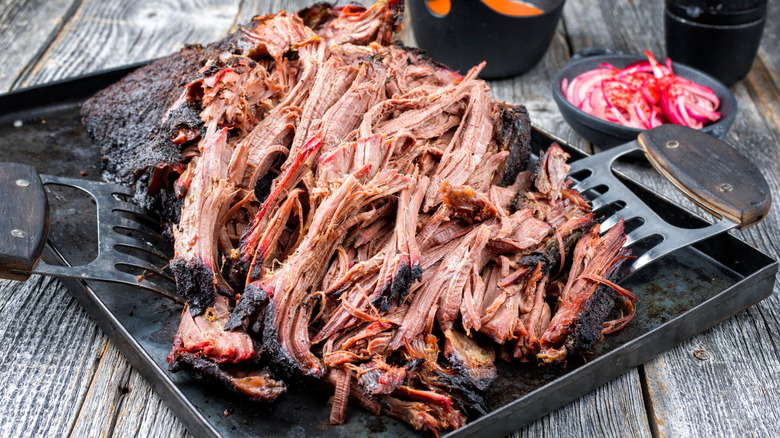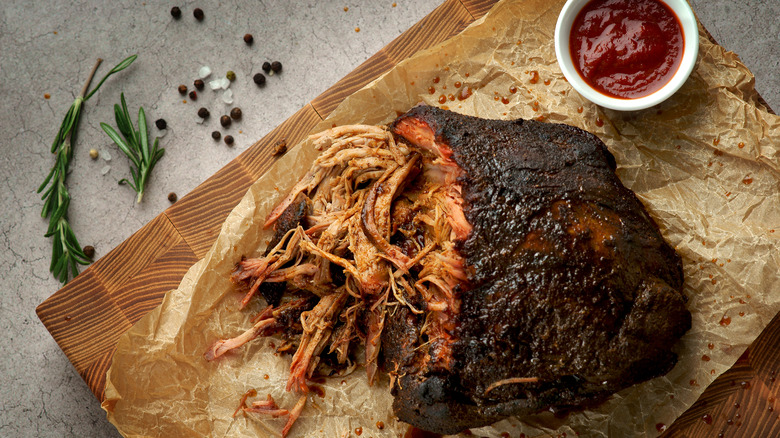How Long Can You Leave Pulled Pork On The Counter?
Tender, perfectly seasoned, and shredded to the right consistency, pulled pork is a staple in the southern regions of the United States, especially in the Carolinas, per hog roasting company Acorn Hog Roast. You might have come across this hearty delicacy in dishes like pulled pork sandwiches or even pulled pork lettuce cups, as the versatility of this shredded meat is often found in side dishes, tacos, salads, sandwiches, and even crispy egg rolls.
But there's a conundrum that needs to be addressed: Pulled pork is often served at picnics and backyard BBQs, which means it will most likely sit out for quite some time, and often in warm temperatures. Or, perhaps the refrigerator is full, leaving you wondering if leftover pulled pork is safe to leave on the counter overnight. Whatever the case may be, here are some important details about how long pulled pork should really be left on the counter.
Beware of pulled pork's danger zone
The danger zone, as defined by the USDA, occurs between 40 degrees Fahrenheit and 140 degrees Fahrenheit and is considered a range where bacteria love to thrive and develop. All it takes is 20 minutes for bacteria to grow twice their size, according to the USDA, so it's very important to keep hot food higher than 140 degrees Fahrenheit and cold food under 40 degrees Fahrenheit (per USDA's Food Safety and Inspection Service). If you're serving pulled pork at a gathering, be sure to place it in warming trays or steam tables that are preheated (via USDA).
And when it comes to tasty food, bacteria doesn't discriminate, as the above danger zone rule applies to all types of perishables (per USDA), including pulled pork. So if the pork is left out at room temperature for longer than 2 hours, throw it out. If temperatures are at 90 degrees Fahrenheit or higher, that magic number becomes 1 hour.
It's also important to note that pulled pork or carnitas may look, smell, and taste just fine if left out at room temperature for longer than 2 hours. But per the USDA, pathogenic bacteria, which grow in the danger zone and cause food-related infections, don't affect the aesthetics of the food in question.

